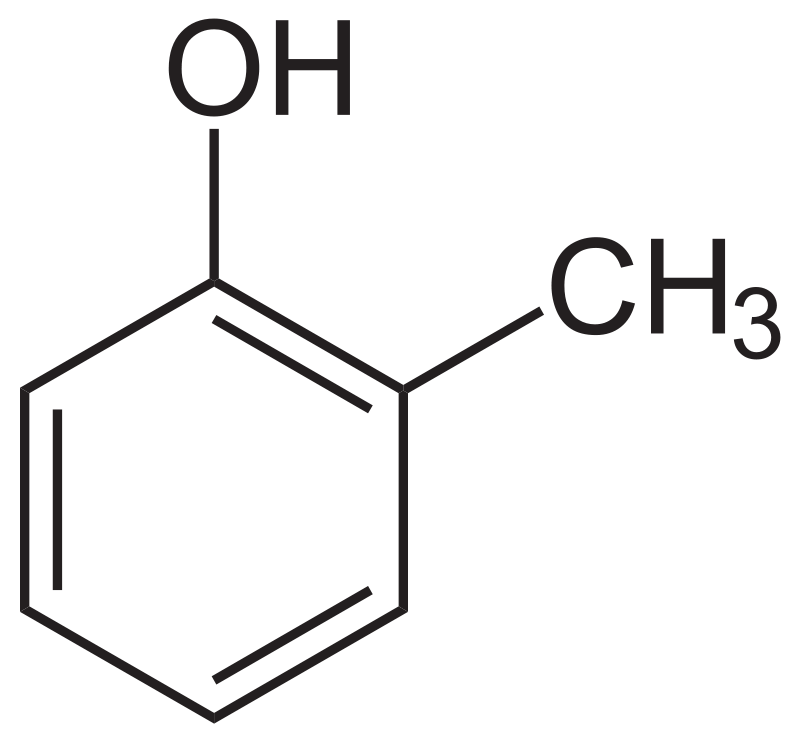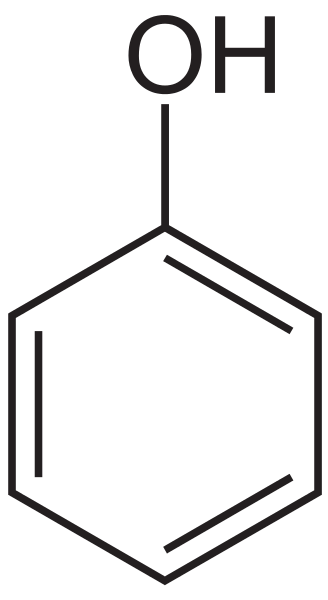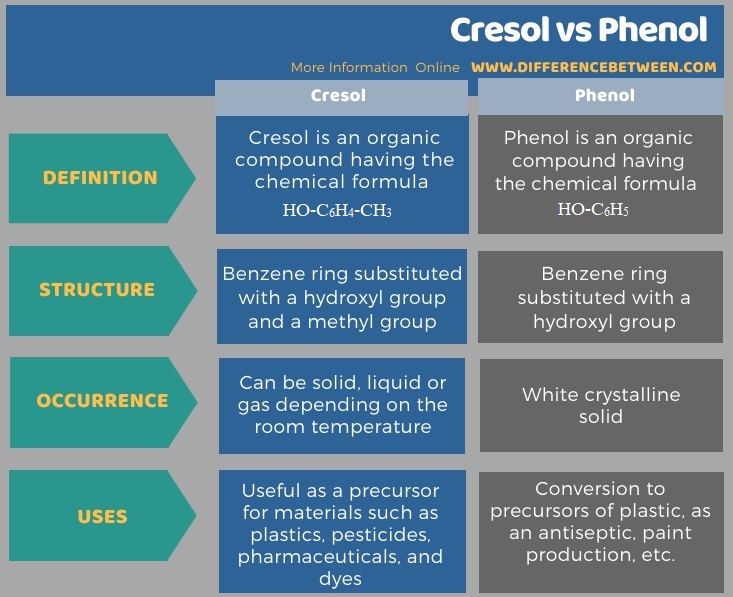Difference Between Cresol and Phenol
The key difference between cresol and phenol is that cresol has a benzene ring substituted with a hydroxyl group and a methyl group, whereas phenol has a benzene ring substituted with a hydroxyl group.
Both cresol and phenol are organic compounds which are aromatic due to the presence of a benzene ring. There is a hydroxyl group (-OH) in both these structures.
CONTENTS
1. Overview and Key Difference
2. What is Cresol
3. What is Phenol
4. Side by Side Comparison – Cresol vs Phenol in Tabular Form
5. Summary
What is Cresol?
Cresol is an organic compound having the chemical formula HO-C6H4-CH3. Since it contains a phenol substituted with a methyl group, we can call it “methylphenol” as well. Also, this compound can be either natural or synthetic. Depending on the substitution of the methyl group, there are three structural isomers of cresol as ortho-, para- and meta-substituted cresol. These three forms can occur in the same mixture; we call it “tricresol”. Mostly, cresol is obtained from coal tar. The synthetic forms are produced via methylation of phenol. Besides, hydrolysis of chlorotoluene can form cresol.

Figure 01: Ortho-Cresol Structure
Moreover, cresol can exist in solid, liquid, or gas phase because the melting and boiling points of it are not far from the room temperature. Upon long exposure to air, this compound can slowly undergo oxidation. Usually, cresol is a colourless compound but the presence of impurities can cause yellow or brown colouration. Also, cresol has an odour resembling the typical phenol odour.
Besides, there are many important applications of cresol. For example, it is useful as a precursor for materials such as plastics, pesticides, pharmaceuticals, and dyes. However, inhalation or ingestion of cresol can cause harmful effects on us. Some toxic effects include irritation of skin, eyes, mouth, and throat. Also, it can cause abdominal pain and vomiting.
What is Phenol?
Phenol is an organic compound having the chemical formula HO-C6H5. It is an aromatic structure because it has a benzene ring. It occurs as a white solid that is volatile. Phenol is a mildly acidic compound due to the presence of a removable proton at the hydroxyl group of phenol. However, we have to handle it with care in order to prevent burns.

Figure 02: Chemical Structure of Phenol
We can obtain phenol by extraction from coal tar. However, it is mainly produced from the petroleum-derived feedstock. The production process is called the “cumene process”. This white solid of phenol has a sweet odour which is tarry. It is soluble in water due to its polarity.
Phenol tends to undergo electrophilic substitution reactions because the lone electron pairs of the oxygen atom are donated to the ring structure. Therefore, many groups including halogens, acyl groups, sulfur-containing groups, etc. can be substituted to this ring structure. Phenol can be reduced to benzene via distillation with zinc dust.
What is the Difference Between Cresol and Phenol?
Cresol and phenol are aromatic organic compounds. But, the key difference between cresol and phenol is that cresol has a benzene ring substituted with a hydroxyl group and a methyl group, whereas phenol has a benzene ring substituted with a hydroxyl group. Moreover, cresol can be solid, liquid or gas depending on the room temperature whereas phenol is a white crystalline solid.
Below infographic summarizes the difference between cresol and phenol.

Summary – Cresol vs Phenol
Cresol and phenol are aromatic organic compounds. The key difference between cresol and phenol is that cresol has a benzene ring substituted with a hydroxyl group and a methyl group whereas phenol has a benzene ring substituted with a hydroxyl group.
Reference:
1. “Cresol.” Wikipedia, Wikimedia Foundation, 7 Feb. 2020, Available here.
2. Bellis, Mary. “The Story of Bakelite, the First Synthetic Plastic.” ThoughtCo, Feb. 11, 2020, Available here.
Image Courtesy:
1. “O-Kresol” By NEUROtiker – Own work (Public Domain) via Commons Wikimedia
2. “Phenol2” By NEUROtiker – Own work (Public Domain) via Commons Wikimedia
ncG1vNJzZmivp6x7pbXFn5yrnZ6YsqOx07CcnqZemLyue8OinZ%2Bdopq7pLGMm5ytr5Wau26v0Z6qqKRdlrulec%2BhnKennGQ%3D